Abstract
Employee assistance programs have grown at a dramatic rate, yet the effectiveness of these programs has been called into question. The purpose of this paper was to assess the effectiveness of employee assistance programs (EAPs) by reviewing recently published EAP evaluations. All studies evaluating EAPs published since 1975 from peer-reviewed journals in the English language were included in this analysis. Each of the articles was assessed in the following areas: (a) program description (subjects, setting, type of intervention, format), (b) evaluation design (research design, variables measured, operational methods), and (c) program outcomes. Results indicate numerous methodological and conceptual weaknesses and issues. These weaknesses included lack of controlled research designs and short time lags between pre- and post-test measures. Other problems identified are missing information regarding subjects, type of intervention, how variables are measured (operational methods), and reliability and validity of evaluation instruments. Due to the aforementioned weaknesses, positive outcomes could not be supported. Recommendations are made for future EAP evaluations.
Full text
PDF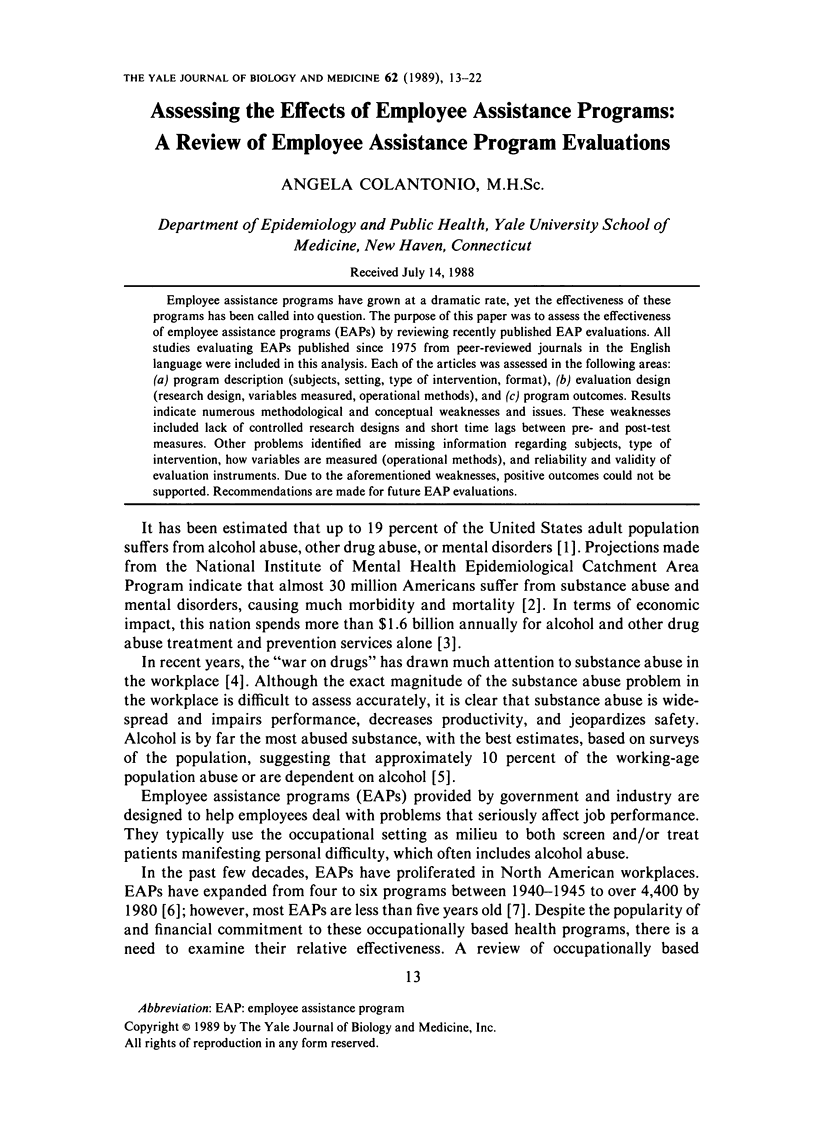
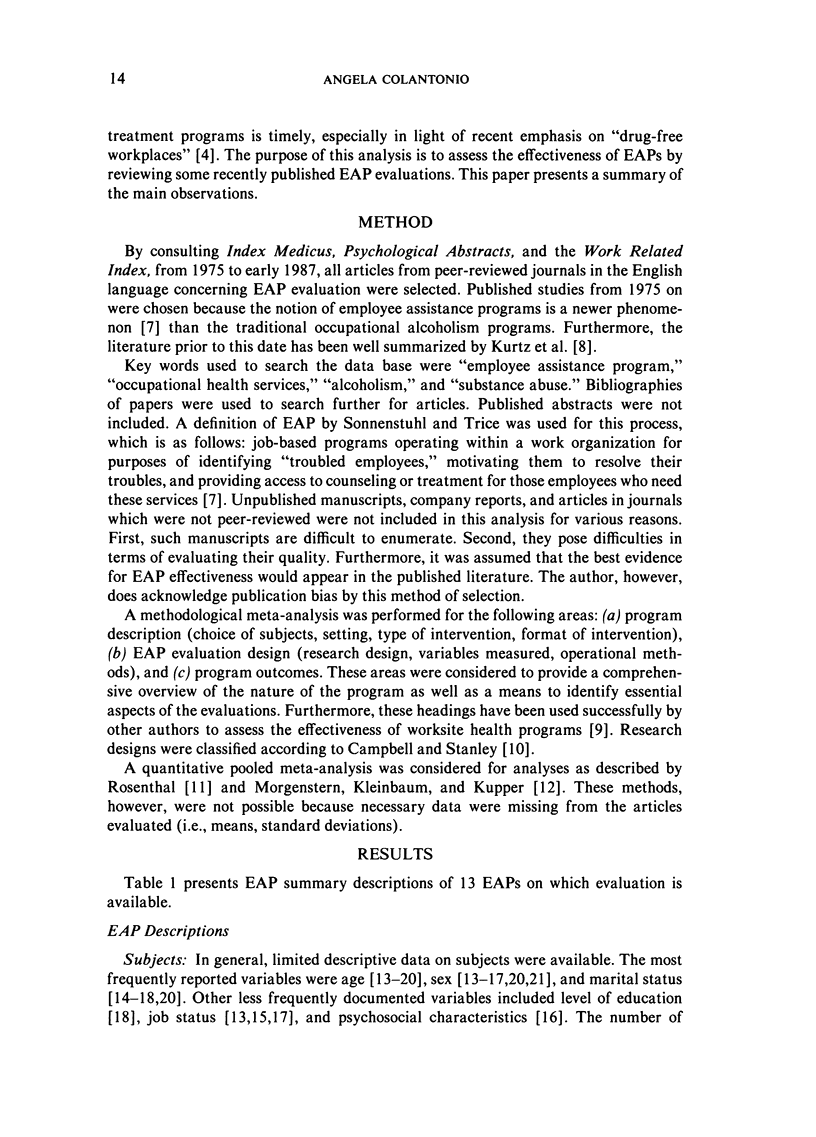
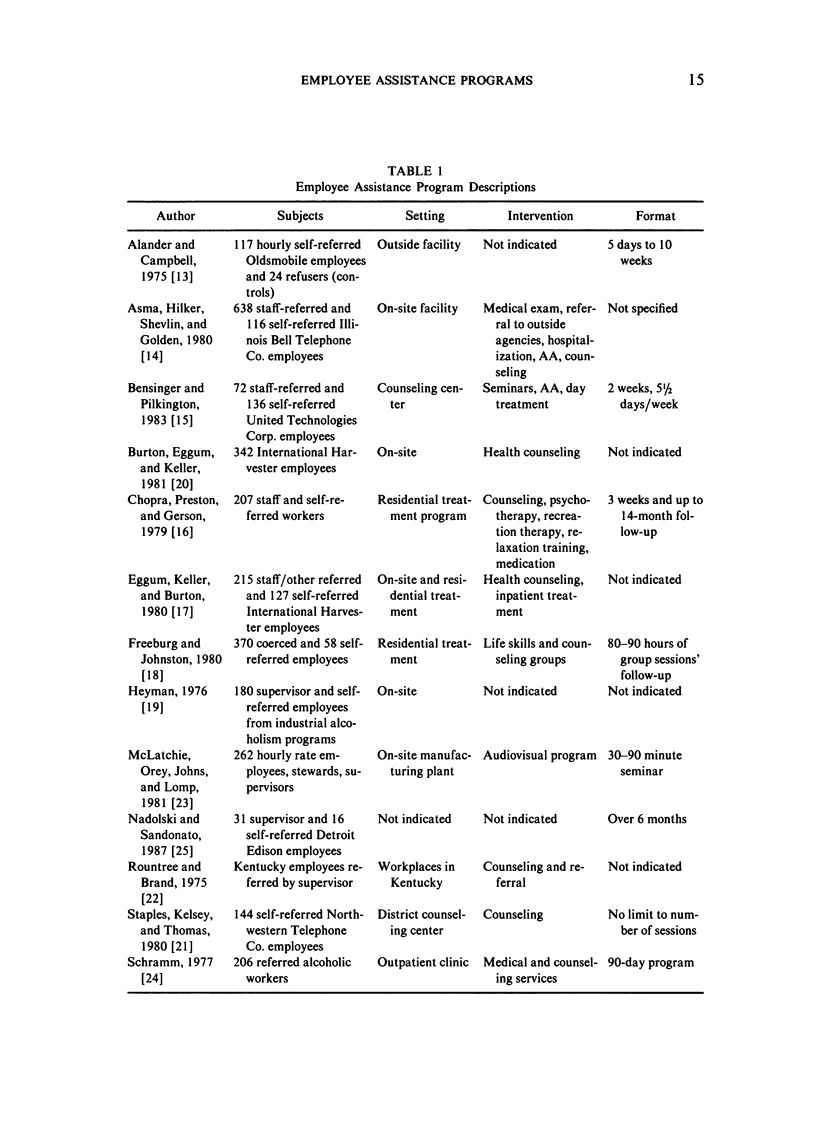
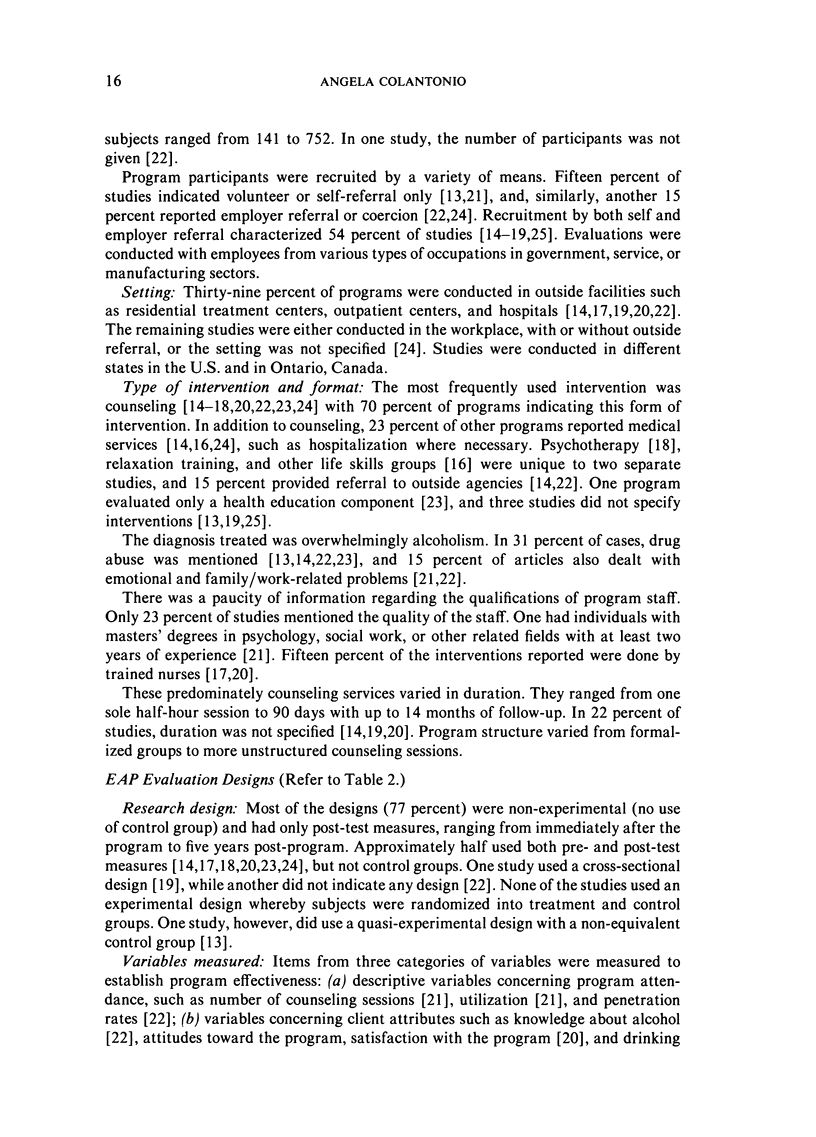
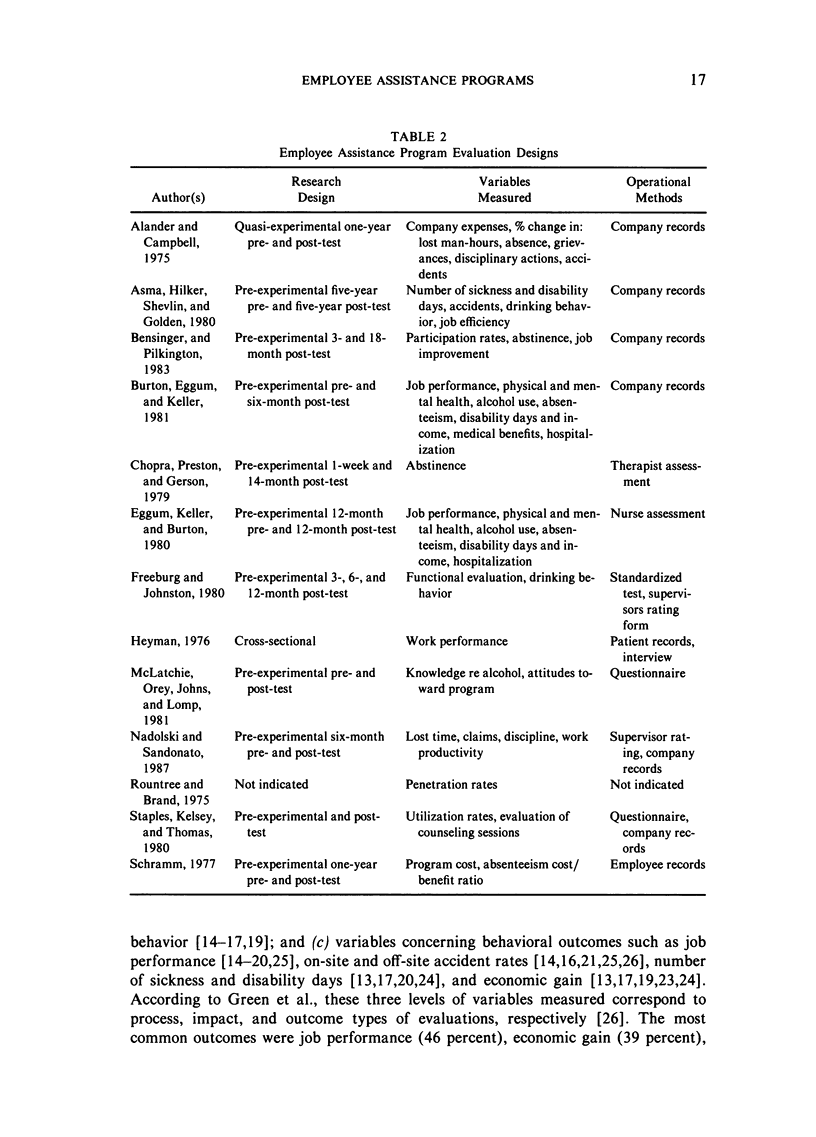
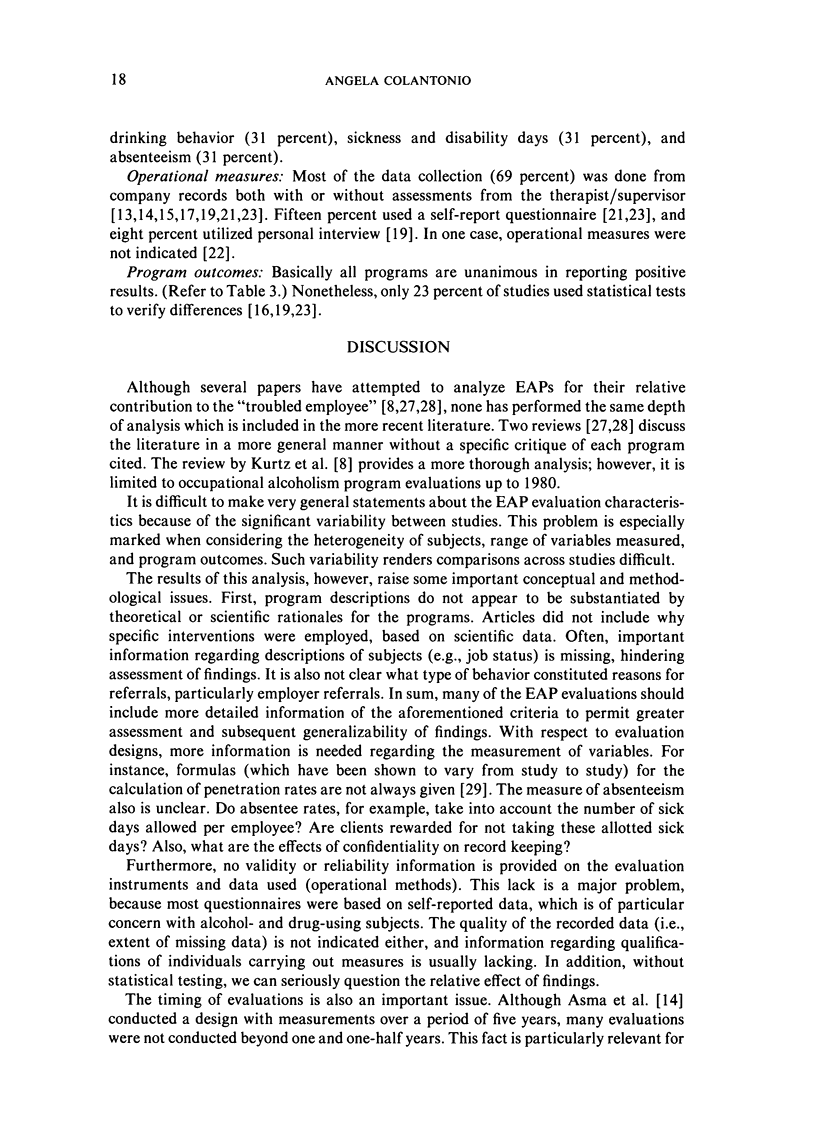
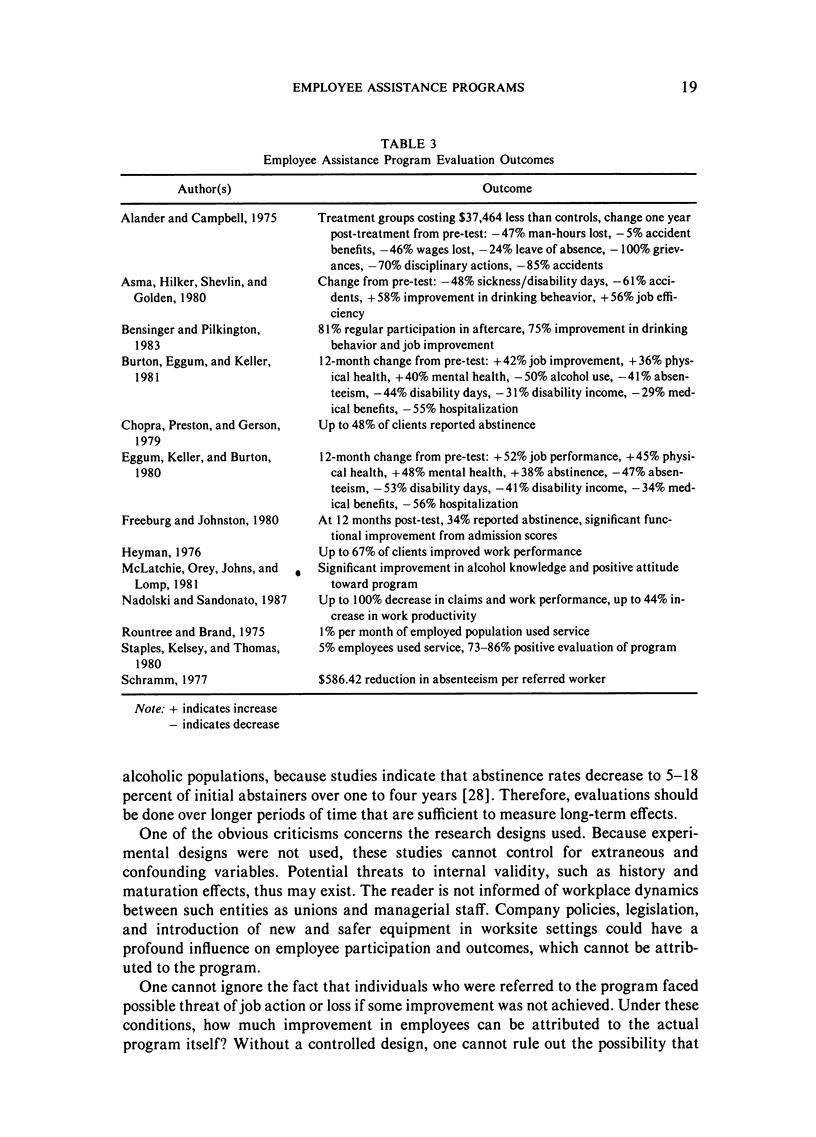
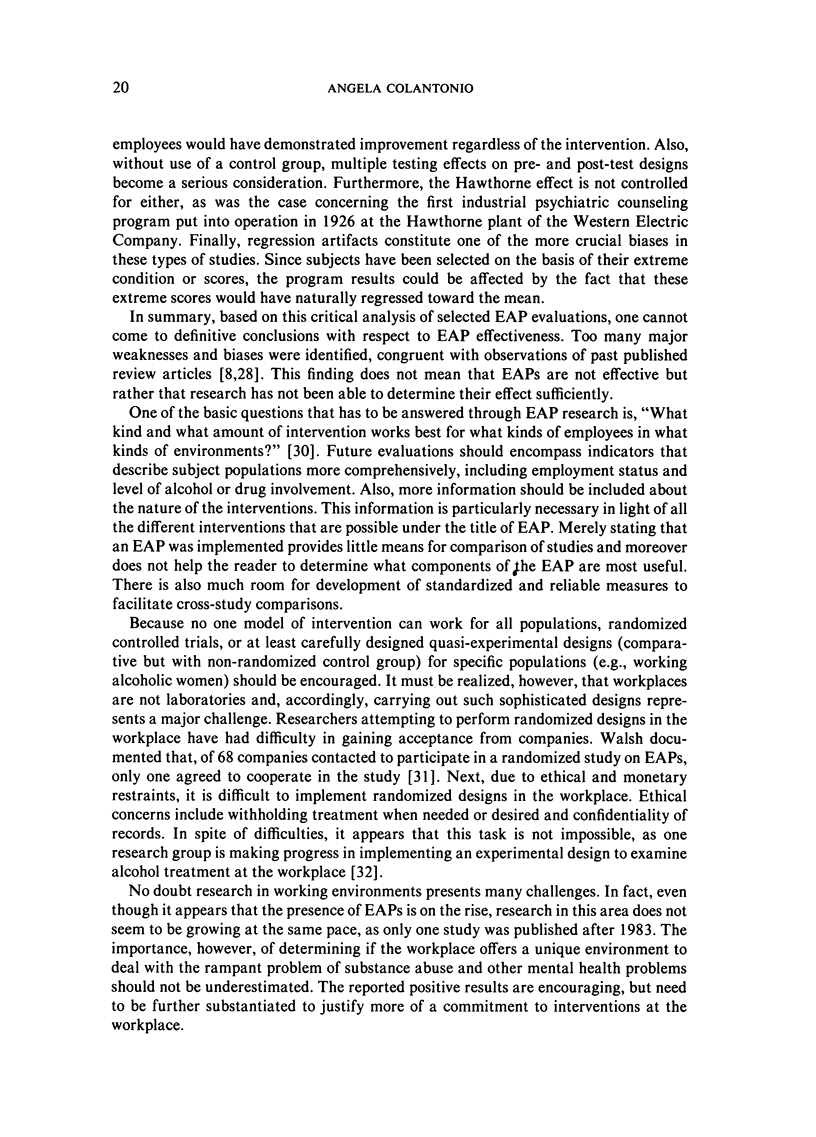

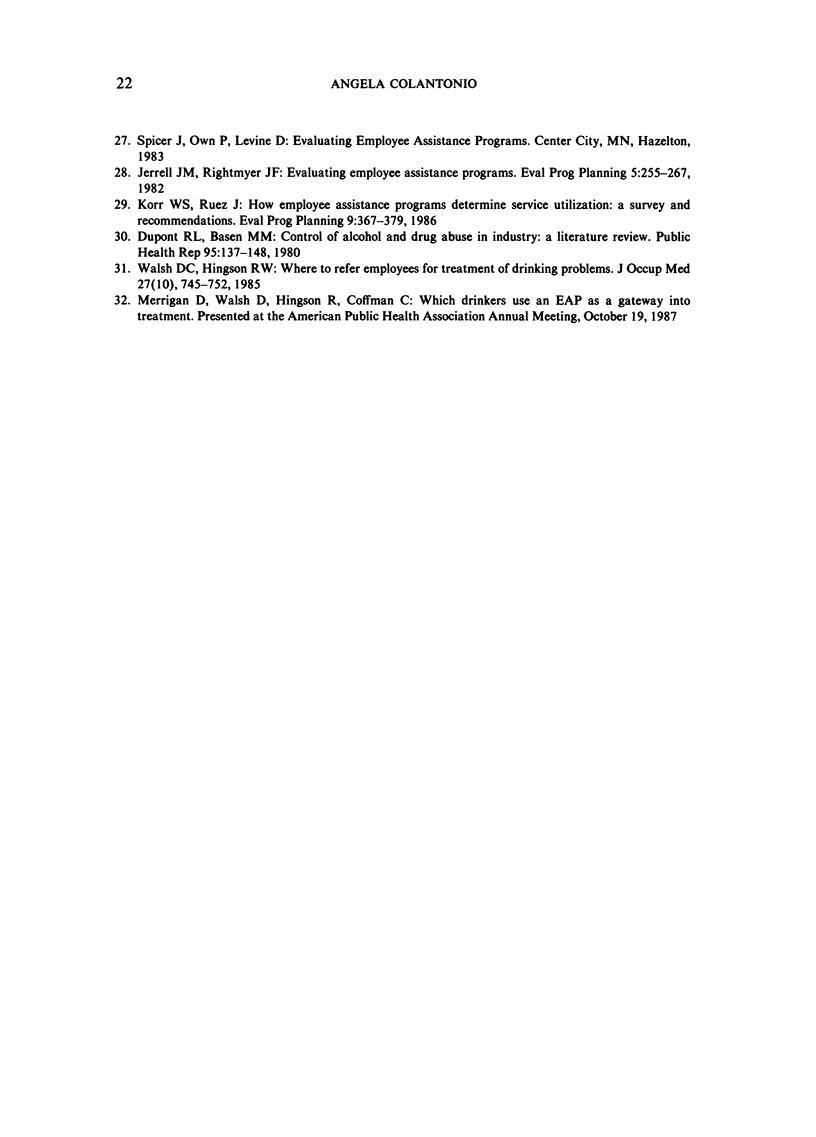
Selected References
These references are in PubMed. This may not be the complete list of references from this article.
- Asma F. E., Hilker R. R., Shevlin J. J., Golden R. G. Twenty-five years of rehabilitation of employees with drinking problems. J Occup Med. 1980 Apr;22(4):241–244. [PubMed] [Google Scholar]
- Bensinger A., Pilkington C. F. An alternative method in the treatment of alcoholism: the United Technologies Corporation day treatment program. J Occup Med. 1983 Apr;25(4):300–303. [PubMed] [Google Scholar]
- Burton W. N., Eggum P. R., Keller P. J. "High-cost" employees in an occupational alcoholism program. A preliminary report. J Occup Med. 1981 Apr;23(4):259–262. [PubMed] [Google Scholar]
- Chopra K. S., Preston D. A., Gerson L. W. The effect of constructive coercion on the rehabilitative process. A study of the employed alcoholics in an alcoholism treatment program. J Occup Med. 1979 Nov;21(11):749–752. [PubMed] [Google Scholar]
- Curran W. J. Compulsory drug testing: the legal barriers. N Engl J Med. 1987 Feb 5;316(6):318–321. doi: 10.1056/NEJM198702053160607. [DOI] [PubMed] [Google Scholar]
- DuPont R. L., Basen M. M. Control of alcohol and drug abuse in industry--a literature review. Public Health Rep. 1980 Mar-Apr;95(2):137–148. [PMC free article] [PubMed] [Google Scholar]
- Eggum P. R., Keller P. J., Burton W. N. Nurse/health counseling model for a successful alcoholism assistance program. J Occup Med. 1980 Aug;22(8):545–548. [PubMed] [Google Scholar]
- Freedberg E. J., Johnston W. E. Outcome with alcoholics seeking treatment voluntarily or after confrontation by their employer. J Occup Med. 1980 Feb;22(2):83–86. doi: 10.1097/00043764-198002000-00004. [DOI] [PubMed] [Google Scholar]
- Gunby P. Nation's expenditures for alcohol, other drugs, in terms of therapy, prevention, now exceed $1.6 billion. JAMA. 1987 Oct 16;258(15):2023–2023. [PubMed] [Google Scholar]
- Heyman M. M. Referral to alcoholism programs in industry. Coercion, confrontation and choice. J Stud Alcohol. 1976 Jul;37(7):900–907. doi: 10.15288/jsa.1976.37.900. [DOI] [PubMed] [Google Scholar]
- Jerrell J. M., Rightmyer J. F. Evaluating employee assistance programs. A review of methods, outcomes, and future directions. Eval Program Plann. 1982;5(3):255–267. doi: 10.1016/0149-7189(82)90077-5. [DOI] [PubMed] [Google Scholar]
- Kamerow D. B., Pincus H. A., Macdonald D. I. Alcohol abuse, other drug abuse, and mental disorders in medical practice. Prevalence, costs, recognition, and treatment. JAMA. 1986 Apr 18;255(15):2054–2057. [PubMed] [Google Scholar]
- Kurtz N. R., Googins B., Howard W. C. Measuring the success of occupational alcoholism programs. J Stud Alcohol. 1984 Jan;45(1):33–45. doi: 10.15288/jsa.1984.45.33. [DOI] [PubMed] [Google Scholar]
- McLatchie B. H., Grey P. M., Johns Y., Lomp K. G. A component analysis of an alcohol and drug program: employee education. J Occup Med. 1981 Jul;23(7):477–480. doi: 10.1097/00043764-198107000-00014. [DOI] [PubMed] [Google Scholar]
- McLeroy K. R., Green L. W., Mullen K. D., Foshee V. Assessing the effects of health promotion in worksites: a review of the stress program evaluations. Health Educ Q. 1984 Winter;11(4):379–401. doi: 10.1177/109019818401100401. [DOI] [PubMed] [Google Scholar]
- Nadolski J. N., Sandonato C. E. Evaluation of an employee assistance program. J Occup Med. 1987 Jan;29(1):32–37. [PubMed] [Google Scholar]
- Regier D. A., Myers J. K., Kramer M., Robins L. N., Blazer D. G., Hough R. L., Eaton W. W., Locke B. Z. The NIMH Epidemiologic Catchment Area program. Historical context, major objectives, and study population characteristics. Arch Gen Psychiatry. 1984 Oct;41(10):934–941. doi: 10.1001/archpsyc.1984.01790210016003. [DOI] [PubMed] [Google Scholar]
- Roman P. M., Blum T. C. Formal intervention in employee health: comparisons of the nature and structure of employee assistance programs and health promotion programs. Soc Sci Med. 1988;26(5):503–514. doi: 10.1016/0277-9536(88)90383-8. [DOI] [PubMed] [Google Scholar]
- Rowntree G. R., Brand J. The employee with alcohol, drug, and emotional problems. A Kentucky occupational program. J Occup Med. 1975 May;17(5):329–332. [PubMed] [Google Scholar]
- Schramm C. J. Measuring the return on program costs: evaluation of a multi-employer alcoholism treatment program. Am J Public Health. 1977 Jan;67(1):50–51. doi: 10.2105/ajph.67.1.50. [DOI] [PMC free article] [PubMed] [Google Scholar]
- Staples L. F., Kelsey J. E., Thomas R. W. An in-house industrial counseling program: the Northwestern Bell Telephone Company experience. J Occup Med. 1980 Jan;22(1):35–40. [PubMed] [Google Scholar]
- Walsh D. C. Employee assistance programs. Milbank Mem Fund Q Health Soc. 1982 Summer;60(3):492–517. [PubMed] [Google Scholar]
- Walsh D. C., Hingson R. W. Where to refer employees for treatment of drinking problems. The limited lessons from empirical research. J Occup Med. 1985 Oct;27(10):745–752. [PubMed] [Google Scholar]


